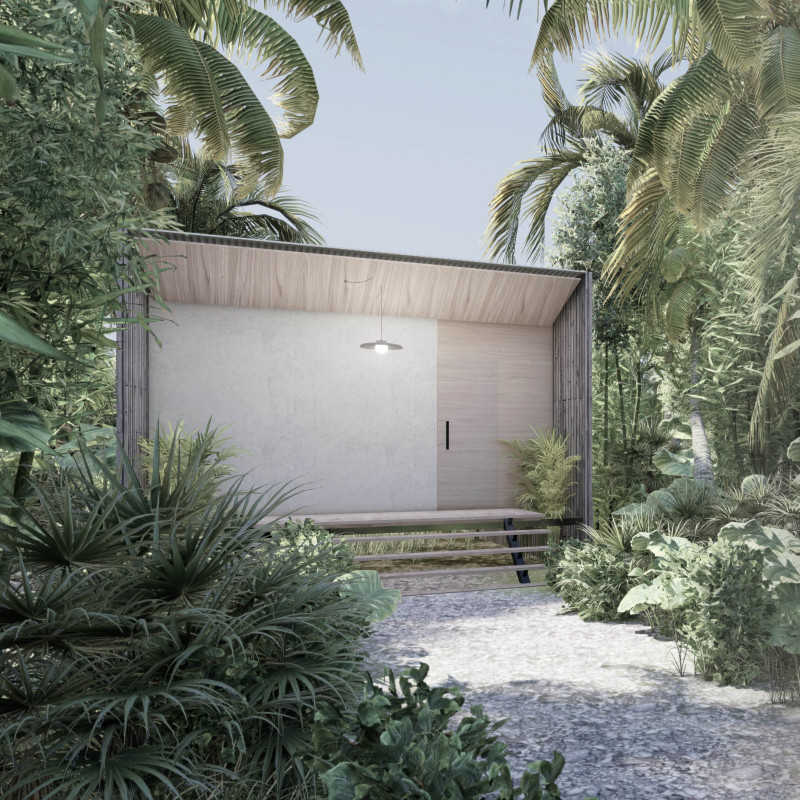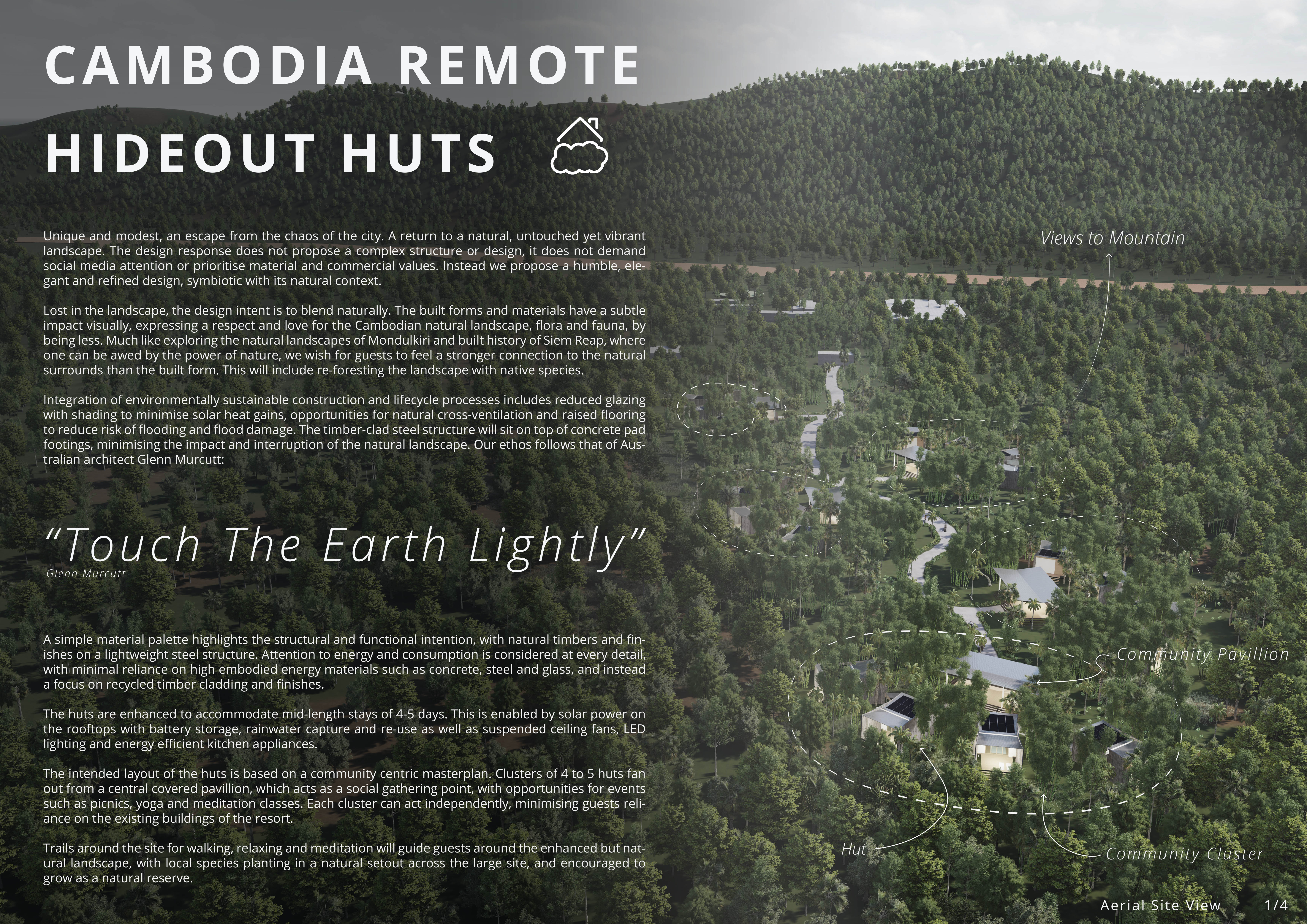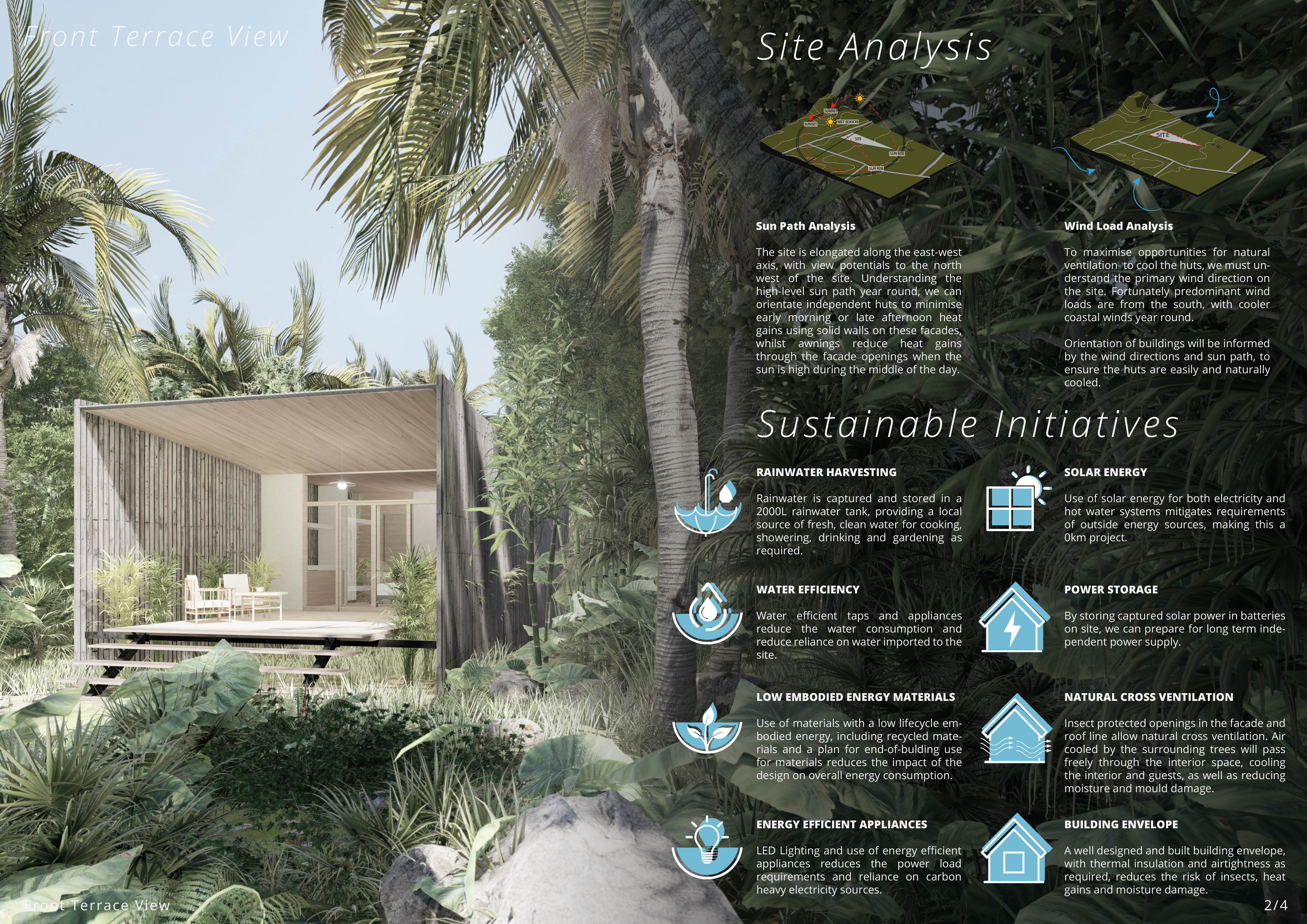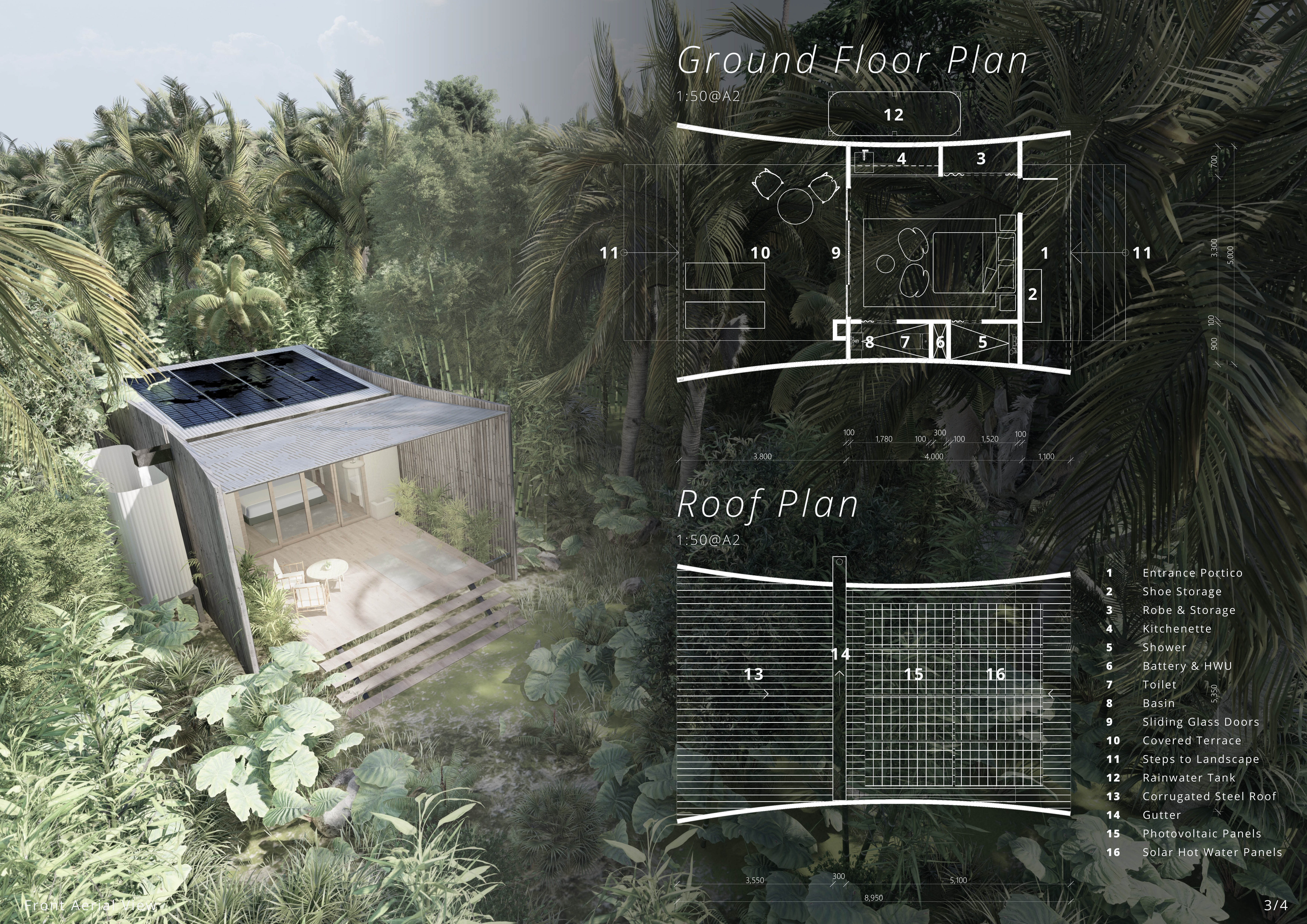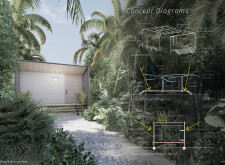5 key facts about this project
The Cambodia Remote Hideout Huts project is located in a quiet and vibrant area of Cambodia, designed to offer a peaceful escape from the busy pace of urban life. Its main goal is to encourage a strong connection with nature. The design concept highlights simplicity and elegance, avoiding complex forms and extravagant designs. Instead, it focuses on creating an environment where guests can immerse themselves in the natural landscape.
Community-Centric Layout
The layout consists of clusters of 4 to 5 huts surrounding a central covered pavilion. This pavilion acts as a gathering place for guests, providing space for activities such as yoga, meditation, and communal meals. The cluster arrangement allows for some independence among the huts, enhancing feelings of tranquility while reducing the need for reliance on existing resort facilities.
Sustainable Design Principles
Sustainability is a key aspect of the design. The huts are strategically positioned to take full advantage of the local climate. By considering solar exposure and wind directions, the design helps maintain comfortable living conditions throughout the year. Features like reduced glazing help limit heat from the sun, and natural ventilation improves airflow within the interiors.
Material Considerations
The materials chosen for construction reflect an aim to blend with the environment. The structures are primarily clad in timber, sitting on concrete pad footings. This lightweight design complements the lush surroundings while minimizing ecological impact. Such choices allow the buildings to function well in their setting, promoting both durability and aesthetic appeal.
In addition to the structural elements, rainwater harvesting systems and solar panels are integrated into the design. These systems support the huts' water and energy needs, allowing for greater self-sufficiency while preserving the landscape's integrity. The focus on practicality and ease of living connects guests to a sense of comfort in a naturally beautiful environment.


